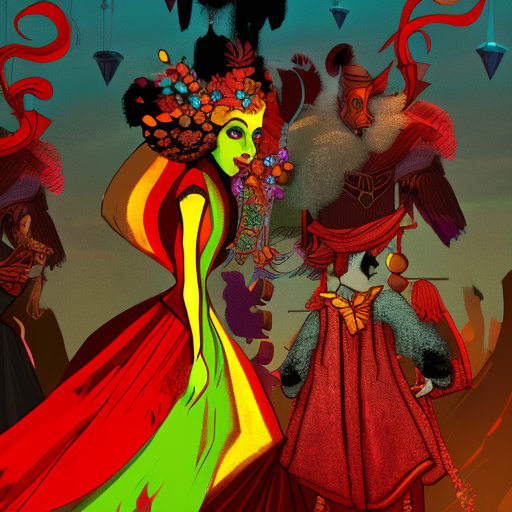Summary:
In Shakespeare’s comedic play, “The Taming of the Shrew,” a headstrong woman named Katherine is pursued by a determined suitor, Petruchio, who aims to tame her fiery spirit. Through a series of witty exchanges, mistaken identities, and clever schemes, Petruchio successfully “tames” Katherine, leading to a controversial and thought-provoking exploration of gender roles, power dynamics, and the nature of love.
The Battle of Wits
“The Taming of the Shrew” opens with a wealthy man named Baptista Minola, who has two daughters: the beautiful and mild-mannered Bianca and the sharp-tongued and independent Katherine. Baptista declares that Bianca cannot marry until Katherine finds a husband, much to the dismay of Bianca’s many suitors. Petruchio, a bold and unconventional man, arrives in town and is immediately intrigued by the challenge of taming Katherine. He sets out to woo her, engaging in a battle of wits that is both humorous and contentious.
A Controversial Courtship
Petruchio’s courtship of Katherine is marked by his unconventional methods and his determination to break her spirit. He employs various tactics, including denying her food and sleep, dressing her in ridiculous outfits, and contradicting her every word. Despite Katherine’s initial resistance, she begins to see through Petruchio’s tactics and realizes that conforming to societal expectations may bring her more freedom and happiness. Eventually, Katherine and Petruchio marry, and Petruchio’s taming methods are put to the test when they return to Katherine’s family home.
A Shift in Power
Upon their return, Petruchio continues to assert his dominance over Katherine, insisting that she agree with his every word and opinion. This shift in power dynamics challenges traditional gender roles and raises questions about the nature of love and marriage. As the play progresses, it becomes clear that Petruchio’s taming of Katherine is not simply about control but rather a means to help her find her own voice and agency within a patriarchal society.
Key Takeaways:
- Gender roles and power dynamics are explored through the unconventional courtship and marriage of Petruchio and Katherine.
- The play raises questions about the nature of love and the role of societal expectations in relationships.
- Shakespeare uses humor and wit to address serious themes, making the play both entertaining and thought-provoking.
“I am ashamed that women are so simple
– Petruchio, Act V, Scene II
To offer war where they should kneel for peace,
Or seek for rule, supremacy, and sway,
When they are bound to serve, love, and obey.”
In “The Taming of the Shrew,” Shakespeare delves into the complexities of gender, power, and love. Through Petruchio’s unconventional methods, the play challenges societal norms and raises important questions about the roles individuals play in relationships. While the play’s treatment of women may be seen as controversial by modern standards, it offers a nuanced exploration of the complexities of human nature and the power dynamics that exist within society. Ultimately, “The Taming of the Shrew” serves as a reminder that true love and understanding can only be achieved through mutual respect and acceptance.












